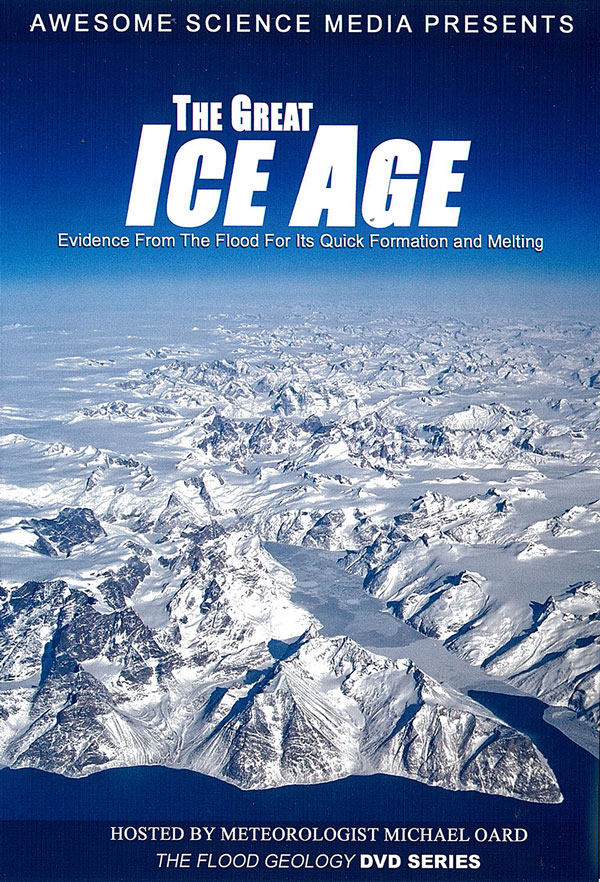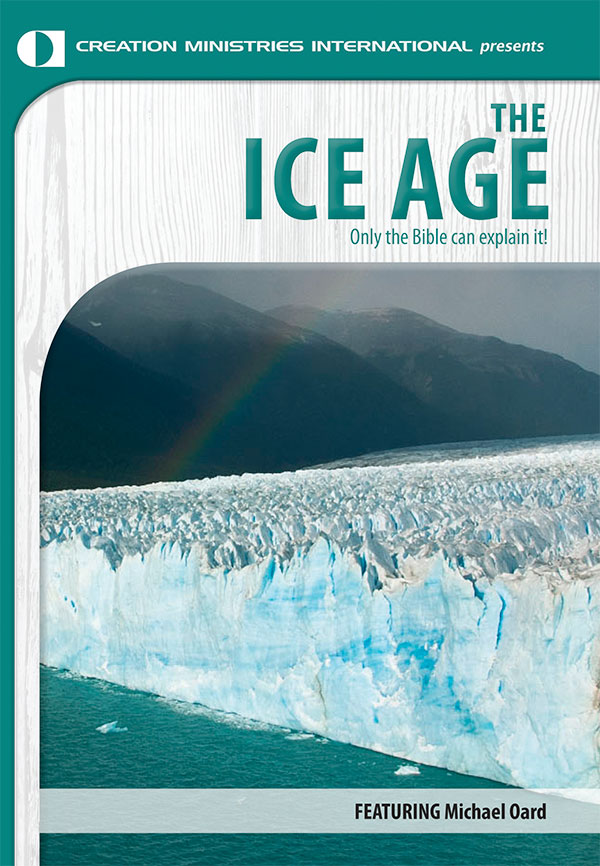Journal of Creation 37(3):13–15, December 2023
Browse our latest digital issue Subscribe
Could humans take down mammoths with spears?
Uniformitarian scientists are still battling over what caused about 67% of mammals over 45 kg to go extinct after their ‘last ice age’.1,2 In some cases, extinction occurred on one continent but not on others. The percentage of extinctions varies on each continent (table 1) and includes mammoths, mastodons, saber-toothed cats, huge ground sloths, glyptodonts, toxodons, and diprotodons. Examples of mammals extirpated from North America, but not elsewhere, include the horse and camel.
Overkill or overchill?
Hardly any extinctions occurred after the other 50 or so presumed previous ice ages of various intensities in the uniformitarian model.3 This strongly suggests two possibilities: (1) their previous ice ages never happened, or (2) some unique event occurred only at the end of the last ice age. Since uniformitarian scientists universally believe the second option, they have developed competing theories.4 Some think the unique change is the migration of humans all over the earth, especially to the Americas and Australia. These scientists believe in the ‘overkill’ model of extinction, claiming humans caused the extinctions. The ‘overill’ model, an offshoot of overkill, proposes that the diseases and rats that accompanied human migration caused most of the extinctions. Few scientists believe this today. The other main theory is ‘overchill’, in which climate change killed them off. Both the overkill and overchill theories can explain some of the data but fail to explain all of it.
Mammoth hunters?
Mammoths lived over much of the mid and high latitudes in the northern hemisphere. Spear points have been found associated with the bones of mammoths and other large mammals in the United States at about a dozen locations.5 So, it has been assumed that the Clovis people, once believed to be the ‘First Americans’, quickly killed the mammoths with spears having unique stone points. However, this view is coming under challenge: “But the Clovis people’s status as adept killers of tusked beasts weighing up to about 9 metric tons has come under fire.”6
Some say the spear points could not penetrate a mammoth
The main problem comes from research showing that, during direct hunting, the Clovis points would rarely be able to penetrate the hair, hide, or fat of a mammoth, even with a spear thrower, called an ‘atlatl’ (figure 1):
“‘It’s not clear that Clovis points attached to spears could even have penetrated a mammoth’s hide’, Eren says. ‘We need to stop assuming that Clovis people and earlier Stone Age groups (in Asia and Europe) must have been mammoth hunters [brackets in original].’”6
Metin Eren had earlier stated, in 2015, that the Clovis spears could easily take down a mammoth, but he changed his mind after conducting research on mammoth characteristics and the momentum of a Clovis spear.7 Based on frozen carcasses in Siberia and the skeletons of mammoths in museums, Eren et al. discovered that the internal anatomy was protected very well. Frozen carcasses in Siberia showed that woolly mammoth skin was 2–3 cm thick on average, and below the skin lay 8–9 cm of fat. The hide was covered by 5–15 cm of dense underfur topped by outer layers of hair 10–60 cm long. A Clovis point had to penetrate 17–30 cm into a woolly mammoth and avoid a picket fence of ribs. In a lab setup with different Clovis points, Eren et al. simulated a spear hitting a target and concluded that Clovis points on a spear could only rarely penetrate deep enough to kill the mammoth. The problem is exacerbated by a moving target. Eren et al. also showed that Clovis pointed spears would not have had enough power to kill a large mammal. Also, the Clovis points that should have hit ribs or other bones would have left behind many broken Clovis points at kill sites. They also suggested that the Clovis points could instead have been used to butcher a dead mammoth. Thus, Eren et al. believe that it was climate change that caused the demise of the woolly mammoth and other mammals at the end of the ‘last ice age’, although mammoths hung on for a while in the Holocene. Eren et al. also have a well-known ally in archeologist Vance Haynes. He accepts that the Clovis point/mammoth associations could be the result of scavenging and adds that there is no clear evidence of hunting with Clovis points.8 He further adds that, of the 10,000 Clovis points found so far, none have been found embedded in the bones of big game, including mammoths and mastodons. Moreover, the number of associations between spear points and large mammals is very small.
Some disagree
But other scientists disagree with Eren et al., probably because they are biased toward the overkill point of view. These critics still believe that Clovis and other people groups in northern Asia killed off the mammoths within a few hundred years.8 They point out that Clovis points (figure 2) were clearly intended for hunting.8 They have also countered Eren et al. by postulating that Clovis hunters could have wounded the mammoths or mastodons, avoiding the rib area, in which case they could follow the wounded animal until it bled to death. In that way, not as many spear points would be damaged. Furthermore, it is not clear how significant the spear point data is to the question of how the Clovis people would have hunted mammoths. As Agam and Bankai note, there were other ways to kill a mammoth plausibly available to the Clovis people besides direct hunting. For instance, running mammoths into bogs, pits, or off cliffs, such as observed with African people groups.9 Therefore, it looks like the debate will continue.
How would the climate have caused the extinctions?
Eren et al. have come to accept that climate change killed off all the beasts. Based on a computer simulation, Fordham et al. claim that rising temperatures were the key variable for mammal extinctions:
“Computer simulations based on ancient DNA, fossil and climate data suggest that rising temperatures and growing human populations led to mammoth die-offs in Europe and Asia starting around 19,000 years ago and in much of Asia [?—sic] starting roughly 15,000 years ago.”10
It is questionable that human populations would have grown large enough in a few hundred years after colonization of a new territory to diminish the mammoth habitat, especially in Siberia and Alaska. But the researchers emphasize that rising temperatures and wetter conditions shrank the grasslands on which the animals lived at the end of the evolutionists’ very cold ice age.8 How could a warmer, wetter climate cause such an end-Pleistocene mass extinction? One would think that rising temperatures and melting ice would open up more habitat for the mammals. The question of how they died remains unanswered.
Biblical Ice Age solution
I believe their confusion is caused by their belief in uniformitarianism, deep time, and evolution. According to the biblical Ice Age,4 which predominantly corresponds to the last uniformitarian Pleistocene ice age, the early-to-mid-Ice Age climate had mild winters, cooler summers, and much greater precipitation than today. In this environment, trees and grass would flourish in various areas of the earth. It was an ideal environment for the population of mammals leaving the Ark to mushroom in population and spread all over the earth.
But the Ice Age climate was dynamic, and, by the end of the Ice Age, winter temperatures were even colder than today, the summers were warming, and precipitation was low. The large animals did not have time to adapt to the rapidly changing climate. This greatly stressed them, and they died from various combinations of climate variables, different on each continent. Human hunting or resource-space competition towards the end of the Ice Age could also have been an additional pressure on the stressed animals. Small animals survived better because they did not need as much food and were able to multiply faster than large animals. And as I listed earlier as the first explanation for the absence of mass extinctions after previous ice ages, this was because there were no previous ice ages.
References and notes
- Barnosky, A.D., Koch, P.L., Feranec, R.S., Wing, S.L., and Shabel, A.B., Assessing the causes of Late Pleistocene extinctions on the continents, Science 306:70–75, 2004. Return to text.
- Faith, J.T., Late Pleistocene and Holocene mammal extinctions on continental Africa, EarthScience Reviews 128:105–121, 2014. Return to text.
- Walker, M. and Lowe, J., Quaternary science 2007: a 50-year retrospective, J. Geological Society London 164:1073–1092, 2007. Return to text.
- Oard, M.J., The Great Ice Age: Only the Bible explains it, Creation Book Publishers, Powder Springs, GA (in press). Return to text.
- Saunders, J.J., Blackwater draws: mammoths and mammoth hunters in the terminal Pleistocene; in: Fox, J.W., Smith, C.B., and Wilkins, K.T. (Eds.), Proboscidean and Paleoindian Interactions, Baylor University Press, Waco, TX, pp. 123–147, 1992. Return to text.
- Bower, B., Pointed takedown of the mammoth hunters, Science News 201(1):22, 2022. Return to text.
- Eren, M.I., Meltzer, D.J., Story, B., Buchanan, B., Yeager, D., and Bebber, M.R., On the efficacy of Clovis fluted points for hunting proboscideans, J. Archaeological Science: Reports 39(103116):1–14. Return to text.
- Bower, ref. 6, pp. 22–26. Return to text.
- Agam, A. and Barkai, R., Elephant and mammoth hunting during the Paleolithic: a review of the relevant archaeological, ethnographic and ethnohistorical records, Quaternary 1(3):1–28, 2018. Return to text.
- Fordham, D.A. et al., Process-explicit models reveal pathway to extinction for woolly mammoths using pattern-orientated validation, Ecology Letters 25:127–137, 2022. Return to text.





Readers’ comments
Comments are automatically closed 14 days after publication.